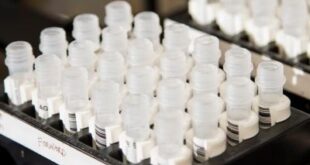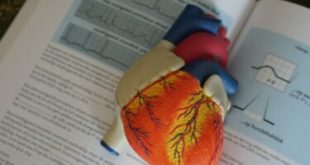The Changing Face of Breast Cancer: Why More Young Indian Women Are at Risk
October is here, and with it, we don our pink ribbons, share stories of survival, and urge screening and hope. But beneath the symbolic gestures lies a more alarming narrative: breast cancer is creeping into younger lives in India, scarily undetected in most cases until it is too late.
While breast cancer has long been associated with women beyond 50, it is no longer a disease that afflicts older age groups alone. Recent data points to a worrying shift where a substantial proportion of cases in India are being diagnosed in women aged under 40. In several Indian studies, about 15 to 20 per cent of breast cancer patients are in this younger age group, statistics far higher than in many western populations, which show just two to six per cent of patients in the same age group.
In Bengaluru and parts of Karnataka, hospitals report that breast cancer cases among women aged 20–40 years have doubled in the past five years. This surge not only signals a growing health crisis but also underlines an urgent need to rethink awareness, diagnosis, and prevention strategies.
Why Is This Happening? Risk Factors, Lifestyles & Gaps
There is no single cause to blame, but a convergence of risk factors is fuelling this upward trend:
Changing reproductive patterns – Later age of first childbirth or fewer children accelerates lifetime exposure to oestrogen and progesterone cycles, which are implicated in breast cancer risk. Shorter durations of breastfeeding or absence of it, remove the protective buffer. Delayed pregnancies, infertility therapies, and hormonal interventions further shift risk dynamics.
Lifestyle transitions – Sedentary habits, obesity or weight gain (especially after adolescence), high-calorie diets and processed food intake, increased alcohol consumption, smoking, and exposure to environmental toxins are altering the age at which cancer affects people. These shifts, once largely urban, are now seen across semi-urban and rural areas too.
Genetic and biological factors – Mutations in genes such as BRCA1 / BRCA2 raise risk significantly. Women with these genes may develop cancer at younger ages. Tumours in young women often tend to be more aggressive, higher-grade, and present with atypical features.
Delayed detection and low screening rates – Self-breast awareness remains low; many young women dismiss lumps as benign. Not much emphasis is laid on educating women to do a basic self-examination or at the very least, consult a doctor for a check-up. Routine screening tests like mammograms/ ultrasounds are rarely done under age 40 in India, and diagnostic delays are common.
According to the National Family Health Survey NFHS-5 (2019-21), only 0.8 per cent of women aged 30–49 years in India have ever undergone breast examination. Combined screening for breast and cervical cancer is a pitiable 0.877 per cent and 1.965 per cent, respectively.
In rural and lower resource settings, lack of access to imaging, path labs, or oncologists compounds the problem. Women in many communities still do not discuss their health concerns with a doctor. In smaller centres where the number of doctors available for patients is small, detection is delayed due to these limitations.
Urbanisation, pollution and toxin exposures – Endocrine-disrupting chemicals in plastics, pesticides, and cosmetics may subtly alter hormone sensitivity. Pollution and particulate matter have been scrutinised for links to cancer risk. The shift towards indoor lifestyles, less sun exposure (which affects vitamin D), and disrupted circadian rhythms may all play hidden roles in increased disposition to cancer.
The Consequences: Health, Emotional and Social
Later-stage diagnosis is more common than early stage diagnosis. Young women often present at Stage II or III, reducing chances for easy cure. Aggressive tumours tend to have increased resistance. Some cancers in younger patients respond poorly to standard therapy or relapse more often.
The emotional trauma that cancer brings can be scarring, not just for the patient but also her family. The shock of a cancer diagnosis at an age often perceived as “too young” affects body image, fertility, sexuality, relationships, career, and mental health. Chemotherapy and radiation can damage ovarian function and cause fertility issues. Many women suffer increased trauma simply because they need to think about egg freezing or hormone replacement therapies even before cancer treatment begins.
Not to forget the financial and social burden of cancer diagnosis in younger women. Most young patients usually lack robust support systems, health insurance, or income security. And diagnosis of a disease like cancer can be debilitating on many fronts.
What Can Be Done: Prevention, Early Detection & Action
🎀Raise awareness young: Promote breast self-examination (BSE) starting in the early 20s. Train community health workers, college clinics, and women’s groups to talk openly about breast health. Use social media campaigns, school programmes (where students and parents are sensitised), and workplace health drives to destigmatise breast checks.
🎀Tailored screening and surveillance: For women with strong family history of cancer or known high-risk genes, screening must begin early in their 20s, with ultrasound or MRI. For the general population, protocols may need rethinking to include imaging and clinical exams for women in the age group 30–40 years in high-risk categories. Regular clinical breast exams by trained practitioners must be encouraged.
🎀Improve access and infrastructure: Expanding low-cost, radiation-free screening (for example, AI-based thermography or imaging) to underserved regions can help with better diagnosis in women from these areas. Diagnostic networks (biopsy, pathology) must be strengthened so that suspicious lesions are followed up promptly.
Rural areas have primary health centres and few small clinics that service patients. Given their dynamics with people in those areas, the PHCs and clinics can integrate breast health into their services on a monthly basis at least.
🎀Lifestyle interventions: Before we talk about disease progression or screening and diagnostics, it is pertinent to note that lifestyle habits have become more sedentary. People must be encouraged to shed lethargy and engage in some physical activity (150 minutes/week or more), eat healthy diets rich in fruits, vegetables, wholegrains and nuts, and reduce alcohol and smoking uptake. In addition, some policy changes are needed to encourage women to breastfeed their babies in separate nurseries in workplaces and communities, and advocate for minimising endocrine disruptors and pollution exposures.
🎀Genetic counselling and preventive care: People in families with a history of breast/ovarian cancer, generally shy away openly discussing or seeking knowledge on the disease and how to protect themselves, for fear of being stigmatised. Such women must be offered genetic testing and active counselling before pregnancy and after childbirth too.
Where appropriate, they may consider preventive measures (e.g. prophylactic surgeries, chemoprevention) under proper medical advice. Young patients can be offered counselling about fertility preservation options before they opt for treatment.
🎀Psychological and peer support: This is important, specifically for women in younger age groups and support can be in the form of counselling or peer support groups that help address issues relating to fertility, mental health, stigma, and treatment. Connecting cancer survivors as mentors or role models can help younger women face their battle with cancer with more confidence.
Know What to Watch For
- Not all lumps are cancer, but there are red flags that should not be ignored:
- A new lump in the breast or underarm, especially if hard, painless, or growing
- Changes in breast size, shape, or symmetry
- Skin changes (dimpling, puckering), nipple inversion or discharge
- Unexplained breast pain or persistent heaviness
- Swelling of part of the breast, redness, or ulceration
If any suspicious change is noticed—whether you are in your 20s or 30s or 40s—seek a competent medical expert or imaging centre and get all necessary tests done without delay. Early diagnosis gives you a better shot at finding the right treatment on time.
This Breast Cancer Awareness Month, let us not limit our pink ribbon gestures to older age groups. The rising tide of breast cancer in young women demands early, loud, constant vigilance from all quarters — family, peers, healthcare systems, schools, workplaces, media, NGOs and policymakers. Only this can help overcome stigma, amplify education campaigns, especially targeting younger demographics, integrate breast health into women’s health services at younger ages, and reassess screening guidelines.
By Dr. Shraddha Modi, Associate Consultant, Breast Oncology & Oncoplastic Surgery, Narayana Health City, Bangalore.
 Newspatrolling.com News cum Content Syndication Portal Online
Newspatrolling.com News cum Content Syndication Portal Online






